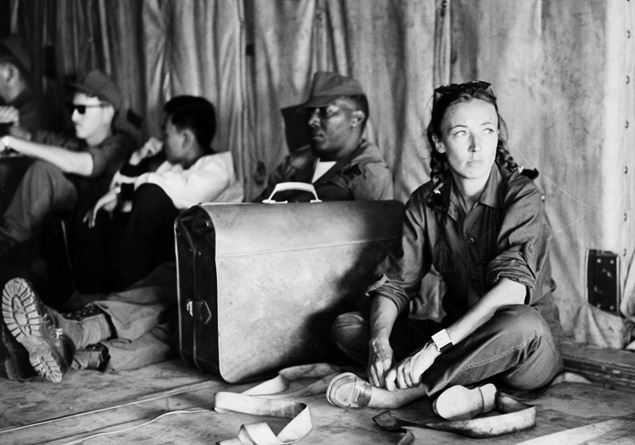Oriana Fallaci (Florence, 29 June 1929 – Florence, 15 September 20069 is a name imported into the history of Italian journalism, as a woman, but also as a professional Tout Court. Many remember her for hers famous interviews, such as the one in Khomeini in 1979 During which, by pressing it on women’s rights in Iran, he took off the chador who had been forced to wear, a gesture to which Ayattollah reacted leaving the room. Or for the stormy love story with the Greek dissident Alexander Panagulis, interrupted only by his death in a car accident, which she claimed to have been a political attack. Or for his positions, after the massacre of 11 September, against Islamic extremism and the decline of western culture. Waiting to watch the eight episodes fiction on TV Miss Fallacidedicated to the early years of Oriana Fallaci’s journalistic career (played by Miriam Leone), we reveal some curious and lesser known aspects of her life.
Oriana Fallaci was the daughter of an anti -fascist craftsman who was tortured to Villa sad and who encourages her to engage in resistance as partisan relay.
The first newspaper in which I work, very young, was the Central Italy morningof Catholic inspiration, from which it was removed because he had refused to write an article against
Palmiro Togliatti.
Was taken to Era Thanks to the uncle journalist Bruno Fallaci, who was the director, but it was relegated to correct drafts To avoid accusations of favoritism
How he confused the few journalist women of the time The first the services that were entrusted to her were fashionable.
As sent to The European he made twelve trips to tell the Vietnam War.
Was severely injured by a burst of machine gun During a massacre of students at the Viglia of the Mexico Olympics, so much so that it was believed dead and only once transported to the morgue they realized that she still breathed.
Among the famous characters she interviewed and Husayn of Jordan, Vread Nguyên Giáp, Pietro Nenni, Giulio Andreotti, Giorgio Amendola, Yasser Arafat, Mohammad Reza Pahlavi, Hailé Selassié, Henry Kissinger, Walter Cronkite, Federico Fellini, Indira Gandhi, Golda Meir, Deng Xiaoping, Willy Brandt, Sean Connery, Mu batamar Gaddafi, Enrico Berlinguer, Tenzin Gyatso, Pier Paolo Pasolini. Many of these interviews are collected in the book Interview with the story.
Despite having attended the university, he never graduated M anel 1977 Columbia College in Chicago conferred him Honoris cause in literature.
Has published in everything Twelve books, Many of which translated into different countries of the world. The last, post -rope, un hat of cherries.
The famous book Letter to an never born child It arises from his painful experiences of spontaneous abortions.
During his reports in Lebanon to follow the first peace mission of the Italian army he met the then sergeant of the army and future astronaut Paolo Nespoli with whom he had a relationship duration five years.
While continuing to express anti-clerical opinions and declaring himself in the strength of “athea-Christian” reason, he publicly declared the Sou admiration towards Pope Benedict XVI, who received it in Castel Gandolfo in private hearing on 27 August 2005.
He left great book heritage together with other memorabilia such as the backpack used in Vietnam, at the Pontifical Lateran University of Rome, whose rector was then mOnsignor Rino Fisichella, personal friend of the writerthat he sets close to her on the point of death.
The missed interview with Marylin Monroe
Oriana Fallaci in 1956 went to Amrica to interview Marilyn Monroe, but it didn’t succeed. fff herself to tell how she went to the preface of the book “The seven sins of Hollywood”. Oriana Fallaci He was a young chronicler of theEuropeansent to Los Angeles To make a report on Hollywood. He chased the diva, who always denied himself, for days until they dissolved that he had moved to New York, where he changed address every month and it was impossible to trace it. At one point Oriana, exhausted, decided to return to Italy, claiming to hate Marilyn, her curves and her golden curls








